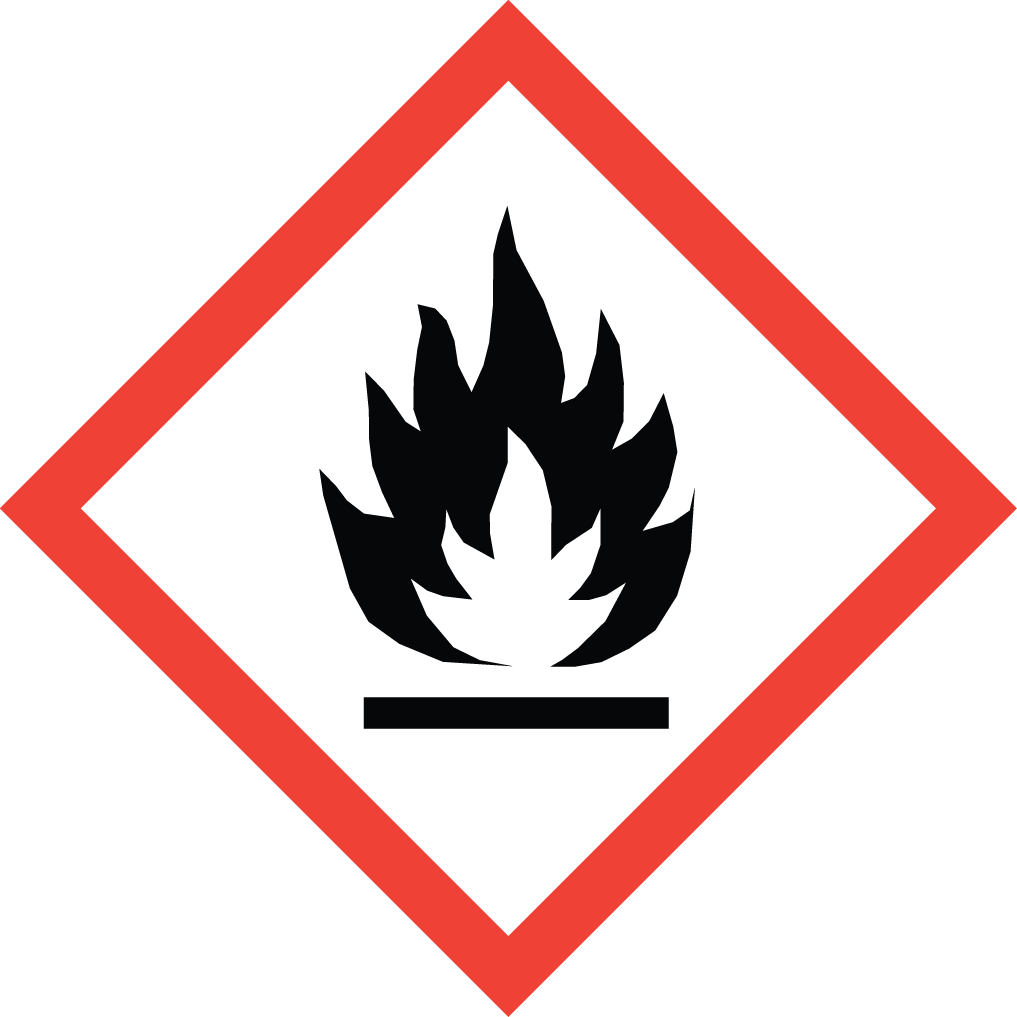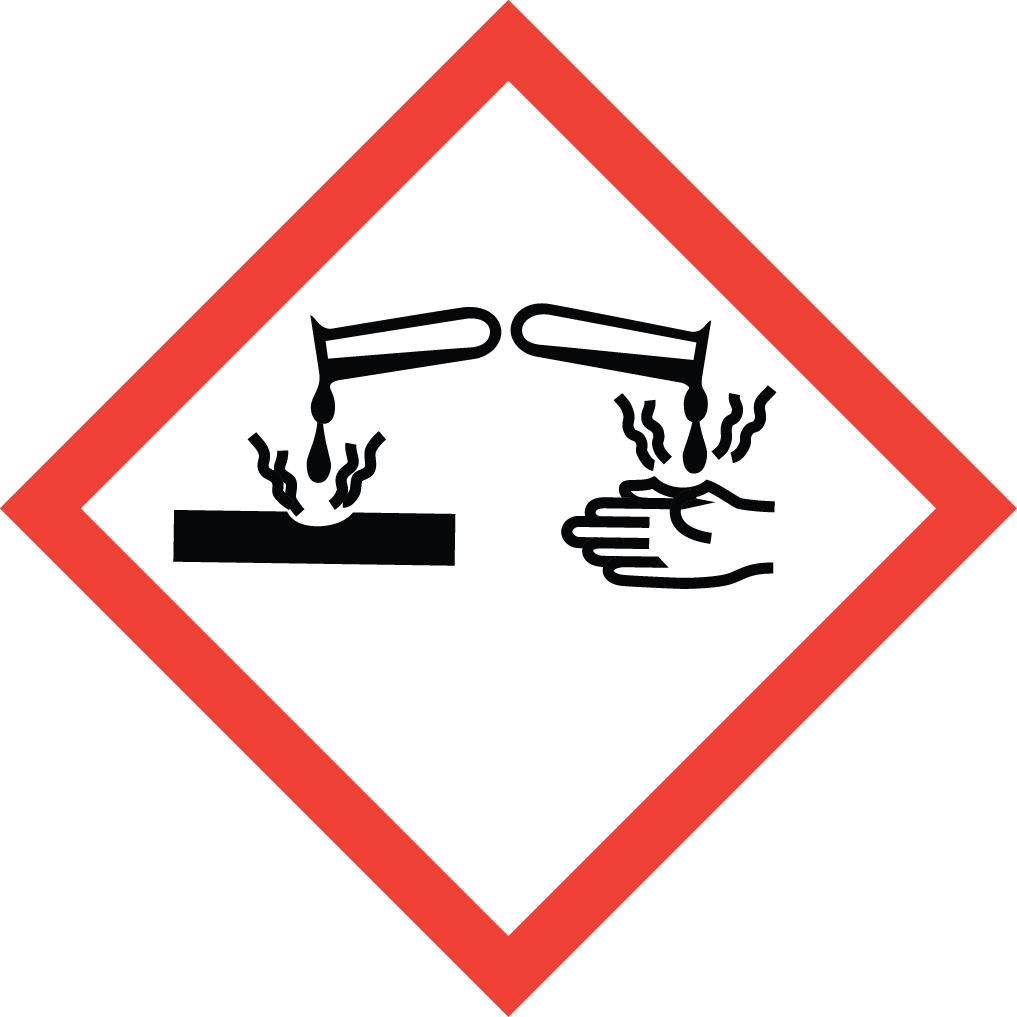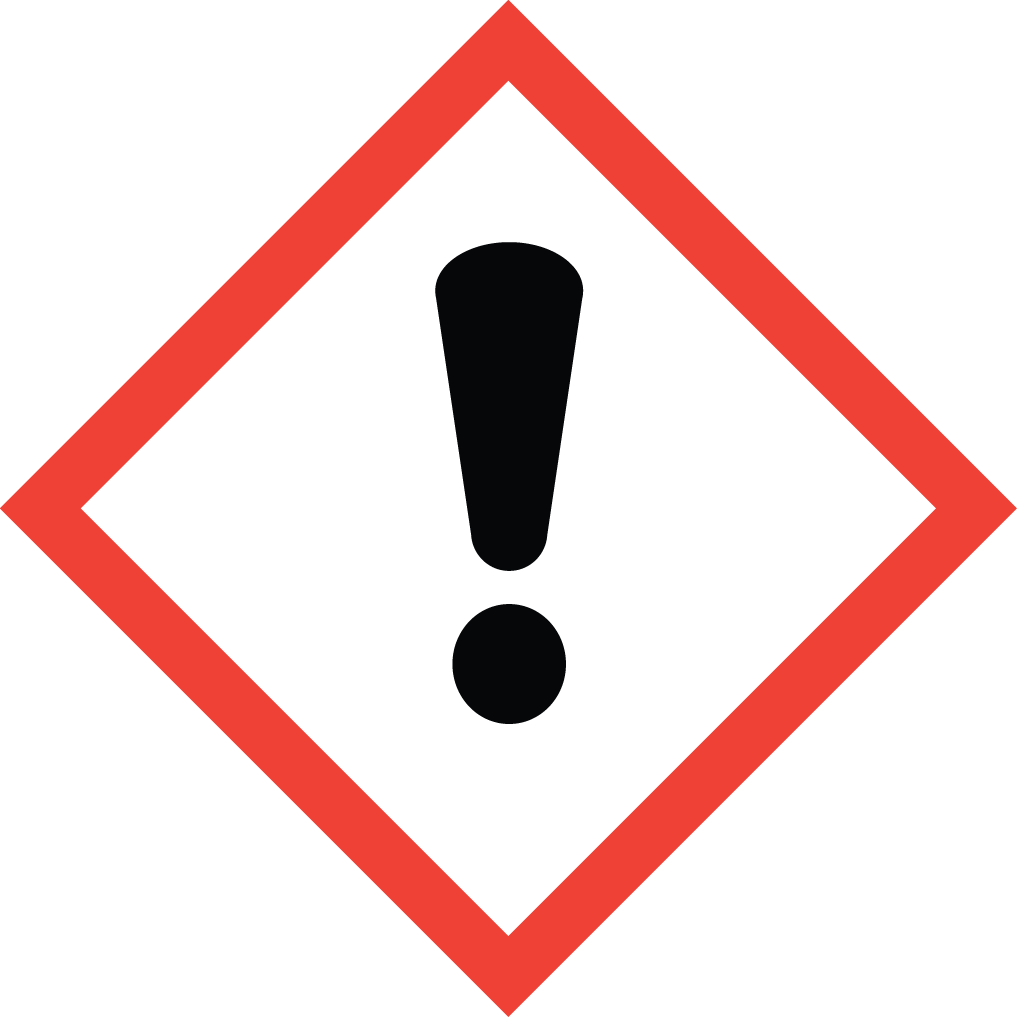Version 3.0
Date revised: 4/26/2019
SAFETY DATA SHEET
Conforms to regulation (EC) no. EU 453/2010
SECTION 1 - IDENTIFICATION OF THE SUBSTANCE/MIXTURE AND OF THE COMPANY/UNDERTAKING
1.1 Product Identifier
1.2 Relevant Identified Uses of the Substance/Mixture and Uses Advised Against
Investigational research by professional users
1.3 Details of the Supplier of the Safety Data Sheet
| Manufacturer National Diagnostics 305 Patton Drive Atlanta, GA 30036 (404) 699-2121 (800) 526-3867 info@nationaldiagnostics.com |
1.4 Emergency Telephone Number
ChemTel Inc.
Contract number MIS8894340
1-800 255-3924 (United States, Canada, Puerto Rico & US Virgin Islands)
01-800-099-0731 (Mexico)
400-120-0751 (China)
000-800-100-4086 (India)
1-300-954-583 (Australia)
0-800-591-6042 (Brazil)
+1-813-255-3924 (All other regions)
SECTION 2 - HAZARDS IDENTIFICATION
2.1 Classification of the Substance or Mixture
Classification according to Regulation (EC) No. 1272/2008 [EU-GHS/CLP]
H226 - Flammable Liquids (Category 3)
H302 - Acute Toxicity-Oral (Category 4)
H312 - Acute Toxicity-Dermal (Category 4)
H314 - Skin Corrosion/Irritation (Category 1C)
H317 - Skin Sensitizer (Category 1)
H318 - Serious Eye Damage/Eye Irritation (Category 1)
H332 - Acute Toxicity-Inhalation (Category 4)
2.2 Label Elements
| GHS Label Elements | ||
 |  | DANGER H226 - Flammable liquid and vapor. |
 | ||
2.3 Other Hazards
None found.
SECTION 3 - COMPOSITION/INFORMATION ON INGREDIENTS
3.2 Mixture
Chemical Names/Description
Solution of xylene, co-solvent and alkyl ether amine with scintillation phosphors.
Component List
| Component | % Comp. | CAS # | EC # | 1278/2008 Classification |
|---|---|---|---|---|
| 3-Methoxypropylamine | 20 - 30 | 5332-73-0 | 226-241-3 | H226, H302, H314, H317, H318 |
| Xylene | 40 - 50 | 1330-20-7 | 215-535-7 | H226, H312, H315, H332 |
| Butoxy Ethanol | 20 - 30 | 111-76-2 | 203-905-0 | H302, H312, H315, H319, H332 |
SECTION 4 - FIRST AID MEASURES
4.1 Description of First Aid Measures
Inhalation
Remove to fresh air. If not breathing, give artificial respiration. If breathing is difficult, give oxygen. Call a physician.
Ingestion
If person is conscious and can swallow, immediately give two glasses of water (16 oz.) but DO NOT INDUCE VOMITING. This material is corrosive. If vomiting occurs, give fluids again. Do not give anything by mouth to an unconscious or convulsing person.
Skin
Immediately flush skin with plenty of soap and water for at least 15 minutes while removing contaminated clothing and shoes. Get medical attention. Wash clothing before reuse. Thoroughly clean shoes before reuse.
Eyes
Immediately flush eyes with plenty of water for at least fifteen minutes, lifting lower and upper eyelids occasionally. Get medical attention immediately.
4.2 Most Important Symptoms and Effects, Both Acute and Delayed
Inhalation
3-Methoxypropylamine:
Nasal discharge, coughing, and discomfort in nose and throat.
Xylene:
Inhalation of high concentrations may result in nausea, vomiting, headache, ringing in the ears, and severe breathing difficulties which may be delayed in onset. Substernal pain, cough, and hoarseness are also reported. Symptoms of central nervous system depression or effects which may occur can include headache, excitation, euphoria, dizziness, incoordination, drowsiness, light-headedness, blurred vision, fatigue, tremors, convulsions, loss of consciousness, coma, respiratory arrest and death, depending on the concentration and duration of exposure.
Butoxy Ethanol:
Burning in nose and throat, coughing. Headache, dizziness, drowsiness, fatigue, nausea.
Ingestion
3-Methoxypropylamine:
Causes burning of mouth, throat, and stomach with abdominal and chest pain, nausea, vomiting, diarrhea, thirst, weakness, and collapse.
Xylene:
Salivation, pain, nausea, vomiting and diarrhea. Exposure may also cause central nervous system symptoms similar to those listed under Inhalation.
Butoxy Ethanol:
Headache, dizziness, drowsiness, fatigue, nausea, vomiting.
Skin
3-Methoxypropylamine:
Severe excess redness and swelling with chemical burns, blister formation, and possible tissue destruction.
Xylene:
Reddening, itching, and inflammation. Repeated or prolonged contact may result in drying, reddening, itching, pain, inflammation, cracking and possible secondary infection with tissue damage.
Butoxy Ethanol:
Redness, pain and itching.
Eyes
3-Methoxypropylamine:
Extreme redness and swelling of the eye. Severe eye damage may cause blindness.
Xylene:
Pain, tears, burns, sensitivity to light, swelling and possible corneal damage. Prolonged or repeated exposure may cause irritation and conjunctivitis.
Butoxy Ethanol:
Redness, tearing, and pain.
4.3 Indication of Any Immediate Medical Attention and Special Treatment Needed
Unknown/not applicable
SECTION 5 - FIRE FIGHTING MEASURES
5.1 Extinguishing media
Dry powder, foam, carbon dioxide. (Water may be ineffective.)
5.2 Special Hazards Arising from the Substance/Mixture
Hazardous Combustion Products
Thermal decomposition products may include toxic oxides of nitrogen and carbon.
Hazardous Decomposition Products
Toxic levels of ammonia, hydrocarbons, and oxides of nitrogen and carbon may be formed on burning in a limited air supply.
Hazardous Polymerization
Will not occur under normal conditions of use (See Sections 10.4 & 10.5).
5.3 Advice for Firefighters
In the event of a fire, wear full protective clothing and NIOSH-approved self-contained breathing apparatus with full facepiece operated in the pressure demand or other positive pressure mode.
5.4 Further Information
No data available.
SECTION 6 - ACCIDENTAL RELEASE MEASURES
6.1 Personal Precautions
Wear appropriate protective equipment as specified in Section 8.
6.2 Environmental Precautions
Prevent discharge into the environment. Dike spills and stop leakage where practical. Do not allow material to enter drains.
6.3 Methods and Materials for Containment and Cleaning Up
Eliminate source of ignition. Ventilate area. Cover with sand, earth or other suitable absorbant to confine spill and sweep or shovel into container. Close container tightly. Avoid breathing vapors.
6.4 References to Other Sections
For disposal information see Section 13. For protective clothing and equipment see Section 8.
SECTION 7 - HANDLING AND STORAGE
7.1 Precautions for Safe Handling
Avoid contact and inhalation. Do not get in eyes, on skin, on clothing. Wash thoroughly after handling. Transfer methods should avoid static sparks. Use explosion proof ventilation.
7.2 Conditions for Safe Storage (including any incompatibles)
Keep in a tightly closed container, stored in a cooled, dry, ventilated area away from sources of heat or ignition. Protect from physical damage. Isolate from incompatible materials (section 10).
Incompatibles
3-Methoxypropylamine:
Strong oxidizing agents and acids.
Xylene:
Strong oxidizing agents and strong acids.
Butoxy Ethanol:
Strong oxidizing agents. Strong bases and salts of strong bases at elevated temperatures. Aluminum surfaces.
7.3 Specific End Uses
Investigational research by professional users
SECTION 8 - EXPOSURE CONTROLS/PERSONAL PRECAUTIONS
8.1 Control Parameters
Component: 3-Methoxypropylamine
ACGIH Threshold Limit Value (TLV):
No Data
OSHA Permissable Exposure Limit (PEL):
None established
Component: Xylene
ACGIH Threshold Limit Value (TLV):
100 ppm
OSHA Permissable Exposure Limit (PEL):
100 ppm
Component: Butoxy Ethanol
ACGIH Threshold Limit Value (TLV):
25 ppm (skin)
OSHA Permissable Exposure Limit (PEL):
25 ppm
8.2 Exposure Controls
Engineering Controls
A system of local and/or general exhaust is recommended to keep employee exposures low. Local exhaust ventilation is generally preferred because it can control the emissions of the contaminant at its source.
Respiratory Protection
In conditions where exposure to this substance may occur, wear a supplied air, full-facepiece respirator, airlined hood, or full-facepiece self-contained breathing apparatus.
Eye Protection
Use chemical safety goggles and/or a full face shield where splashing is possible. Maintain eye wash fountain and quick-drench facilities in work area.
Skin Protection
Wear impervious protective clothing, including boots, gloves, lab coat, apron or coveralls, as appropriate, to prevent skin contact.
SECTION 9 - PHYSICAL AND CHEMICAL PROPERTIES
9.1 Information on Basic Physical & Chemical Properties
| a. Appearance | Clear colorless liquid | b. Odor | Slight aromatic |
| c. Odor Threshold | N.A. | d. pH | Not applicable. |
| e. Melting/Freezing Point (oC) | N.A. | f. Boiling point (oC) | 137-140 |
| g. Flash Point (oC) | 32 | h. Evaporation Rate | 0.7 |
| i. Flammability | Combustible | j. Upper/Lower Flammability or Explosive Limits | No Data |
| k. Vapor Pressure | 25mmHg @ 25C | l. Vapor Density (Air = 1) | 3.7 |
| m. Relative Density | 0.87 | n. Water Solubility | Insoluble |
| o. Partition Coefficient n-octanol/water | Mixture | p. Autoignition Temperature (oC) | No Data |
| q. Decomposition Temperature (oC) | Not applicable. | r. Viscosity | 1.4 cSt @ 23 C |
| s. Explosive Properties | Combustible liquid and vapors | t. Oxidizing Properties | Not an oxidizer |
SECTION 10 - STABILITY AND REACTIVITY
10.1 Reactivity
Not reactive under recommended conditions of use and storage.
10.2 Chemical Stability
Stable under ordinary conditions of use and storage.
10.3 Possibility of Hazardous Reactions
Will not occur under normal conditions of use (See Sections 10.4 & 10.5).
10.4 Conditions to Avoid
Heat, flame, ignition sources and incompatibles.
10.5 Incompatible Materials
3-Methoxypropylamine:
Strong oxidizing agents and acids.
Xylene:
Strong oxidizing agents and strong acids.
Butoxy Ethanol:
Strong oxidizing agents. Strong bases and salts of strong bases at elevated temperatures. Aluminum surfaces.
10.6 Hazardous Decomposition Products
Toxic levels of ammonia, hydrocarbons, and oxides of nitrogen and carbon may be formed on burning in a limited air supply.
SECTION 11 - TOXICOLOGICAL INFORMATION
Product LD50 Values
Oral Rat LD50 (mg/kg)
2760
Dermal Rabbit LD50 (mg/kg)
8000
Component Cancer List Status
| NTP Carcinogen | |||
| Known | Anticipated | IARC Category | |
|---|---|---|---|
| 3-Methoxypropylamine | No | No | None |
| Xylene | No | No | 3 |
| Butoxy Ethanol | No | No | None |
Potential Health Effects
Inhalation
3-Methoxypropylamine
Vapors or mist, expecially as generated from heating the material or as from exposure in poorly confined spaces, are irritating to the nose and throat. Prolonged or repeated exposure may result in lung damage. Prolonged or repeated exposure may result in the absorption of potentially harmful amounts of material.
Xylene
Inhalation of vapors may be irritating to the nose and throat. High vapor concentrations are anesthetic and central nervous system depressants.
Butoxy Ethanol
Vapors may cause irritation to the nose, throat, and respiratory tract and are toxic if inhaled.
Ingestion
3-Methoxypropylamine
Causes burning of mouth, throat and stomach with abdominal and chest pain. Aspiration may result during swallowing or vomiting, resulting in lung damage.
Xylene
May cause irritation of the mouth, throat, and gastrointestinal tract. Aspiration into lungs may cause chemical pneumonia and lung damage.
Butoxy Ethanol
Moderately toxic if ingested.
Skin
3-Methoxypropylamine
Causes severe irritation with pain.
Xylene
Skin contact results in loss of natural oils and often results in a characteristic dermatitis. May be absorbed through the skin.
Butoxy Ethanol
Product is mildly irritating to the skin and toxic if absorbed through the skin.
Eyes
3-Methoxypropylamine
Causes severe irritation and chemical burns of the eye. Severe eye damage may cause blindness.
Xylene
Vapors cause eye irritation. Splashes cause severe irritation, possible corneal burns and eye damage.
Butoxy Ethanol
Causes severe eye irritation.
Carcinogenicity
3-Methoxypropylamine
Not listed as a known or anticipated carcinogen by OSHA, IARC, or NTP.
Xylene
IARC has determined that there is inadequate evidence to assign the carcinogenicity of xylene in humans and in experimental animals (IARC Class 3).
Butoxy Ethanol
Not listed as a known or anticipated carcinogen by NTP or IARC.
Mutagenicity
3-Methoxypropylamine
No information found.
Xylene
Has been shown to be positive in mutagenicity assays.
Butoxy Ethanol
No information found.
Reproductive Toxicity
3-Methoxypropylamine
No information found.
Xylene
May cause adverse reproductive and/or developmental effects. Pregnant women may be at an increased risk from exposure. Consumption of alcoholic beverages may enhance toxic effects.
Butoxy Ethanol
Inhalation exposure of pregnant rabbits caused some lethality to the dam and fetus at 200 ppm, but there were no effects at 100 ppm and below. Inhalation exposure to pregnant rats caused irritancy to the dams and related fetotoxicity at 200 and 100 ppm, but there were no effects at 50 ppm and below.
Teratogenic Effects
3-Methoxypropylamine
No information found.
Xylene
May cause teratogenic effects.
Butoxy Ethanol
Has not been shown to cause birth defects.
Routes of Entry
3-Methoxypropylamine
Inhalation, ingestion, skin contact.
Xylene
Inhalation, ingestion, and skin contact.
Butoxy Ethanol
Inhalation, ingestion, skin contact.
Target Organ Statement
3-Methoxypropylamine
Skin contact may aggravate an existing dermatitis (skin condition). Overexposure to vapor, dust or mist may aggravate existing respiratory conditions, such as asthma, bronchitis, and inflammatory or fibrotic respiratory disease.
Xylene
Pre-existing medical conditions which may be aggravated by exposure include disorders of the skin, eye, heart, kidney, liver, blood, respiratory system, neurological and hemopoietic organs.
Butoxy Ethanol
Preexisting skin, eye, and lung disorders may be aggravated by exposure.
SECTION 12 - ECOLOGICAL INFOMATION
12.1 Toxicity
COMPONENT: 3-Methoxypropylamine
| Vertebrates | Invertebrates | Algae | Microorganisms | |
|---|---|---|---|---|
Aquatic Toxicity (ppm unless otherwise noted) | LC50 (96 hr golden orfe) 146mg/ml | EC50 (48hr, daphnia) 65mg/L | EC50 (72 hr) 31mg/L | EC50 (72hr) 182mg/L |
| Birds | Arthropods | Plants | Microorganisms | |
|---|---|---|---|---|
Terrestrial Environment Toxicity (ppm unless otherwise noted) | No data | No data | No data | No data |
COMPONENT: Xylene
| Vertebrates | Invertebrates | Algae | Microorganisms | |
|---|---|---|---|---|
Aquatic Toxicity (ppm unless otherwise noted) | LC50 (96 hr, Salmo gairdneri) 2.6 mg/l | IC50 (Daphnia magna) 1 mg/l. | EC50 2.2 mg/l | IC50 (24hr) 96mg/l |
| Birds | Arthropods | Plants | Microorganisms | |
|---|---|---|---|---|
Terrestrial Environment Toxicity (ppm unless otherwise noted) | No data | No data | No data | IC50 (10hrs) 0.22g/g soil |
COMPONENT: Butoxy Ethanol
| Vertebrates | Invertebrates | Algae | Microorganisms | |
|---|---|---|---|---|
Aquatic Toxicity (ppm unless otherwise noted) | LC50 (96hr, trout) 1464mg/l | EC50 (48 hr daphnia) 1800 mg/L | EC50 (72 hr) 911mg/l | Toxicity Threshold 483mg/L |
| Birds | Arthropods | Plants | Microorganisms | |
|---|---|---|---|---|
Terrestrial Environment Toxicity (ppm unless otherwise noted) | No data | No data | No data | No data |
12.2 Persistence and Degradability
3-Methoxypropylamine
Not readily biodegradable (57% degradation in 56 days)
Xylene
Readily biodegradable, >85% elimination in 28 days
Butoxy Ethanol
Readily biodegradable (90% in 28 days)
12.3 Bioaccumulative Potential
3-Methoxypropylamine
BCF 2.7-3.6
Xylene
BCF 5-15
Butoxy Ethanol
No data
12.4 Mobility in Soil
3-Methoxypropylamine
Log Koc 1.41
Xylene
log Koc 2.73
Butoxy Ethanol
No data
12.5 Results of PBT and vPvB Assessment
3-Methoxypropylamine
Not PBT or vPvB
Xylene
not PBT / vPvB
Butoxy Ethanol
Not PBT/vPvB
12.6 Other Adverse Effects
3-Methoxypropylamine
None
Xylene
None
Butoxy Ethanol
None
SECTION 13 - DISPOSAL CONSIDERATIONS
13.1 Waste Treatment Methods
Offer surplus or non-recyclable product to licensed disposal company. Disposal is subject to user compliance with applicable law and product characteristics at time of disposal. Dispose of packaging as product.
SECTION 14 - TRANSPORT INFORMATION
| ADR/RID | IATA | IMO | DOT | |
|---|---|---|---|---|
| 14.1 UN Number | 2924 | 2924 | 2924 | 2924 |
| 14.2 Shipping Name | Flammable liquid, corrosive, N.O.S. | Flammable liquid, corrosive, N.O.S. | Flammable liquid, corrosive, N.O.S. | Flammable liquid, corrosive, N.O.S. |
| 14.3 Hazard Class | 3, 8 | 3, 8 | 3, 8 | 3, 8 |
| 14.4 Packing Group | II | II | II | II |
| 14.5 Environmental Hazards | N.A. | N.A. | Not regulated | N.A. |
| 14.6 Special Precautions | N.A. | N.A. | N.A. | N.A. |
SECTION 15 - REGULATORY INFORMATION
15.1 Safety, Health and Environmental Regulations/Legislation Specific for the Substance/Mixture
United States
TSCA Regulatory Statement
All intentional ingredients are listed on the TSCA Inventory.
SARA 311/312 Hazard Categories
| Component | Fire | Pressure | Reactivity | Acute | Chronic |
|---|---|---|---|---|---|
| 3-Methoxypropylamine | Yes | No | No | Yes | Yes |
| Xylene | Yes | No | No | Yes | Yes |
| Butoxy Ethanol | Yes | No | No | Yes | No |
Europe
EEC Regulatory
All intentional ingredients are listed on the European EINECS Inventory.
SECTION 16 - OTHER INFORMATION
Revisional Updates
4/26/2019 - Updated Section 1.4
5/29/2015 - Updated Sections 2.1 and 3.2
1/10/2014 - Released Version 1.0
NFPA Codes
Health 3 Flammability 3 Reactivity 0
Dangers
3-Methoxypropylamine
H226 - Flammable liquid and vapor.
H302 - Harmful if swallowed
H314 - Causes severe skin burns and eye damage.
H317 - May cause an allergic skin reaction.
H318 - Causes serious eye damage.
Xylene
H226 - Flammable liquid and vapor.
H312 - Harmful in contact with skin.
H315 - Causes skin irritation.
H332 - Harmful if inhaled.
Butoxy Ethanol
H302 - Harmful if swallowed
H312 - Harmful in contact with skin.
H315 - Causes skin irritation.
H319 - Causes serious eye irritation.
H332 - Harmful if inhaled.
MANUFACTURER DISCLAIMER: The information given herein is offered in good faith as accurate, but without guarantee. Conditions of the use and suitability of the product for particular uses are beyond our control. All risks of use of the product are therefore assumed by the user. Nothing is intended as a recommendation for uses which infringe valid patents or as extending license under valid patents. Appropriate warnings and safe handling procedures should be provided to handlers and users.